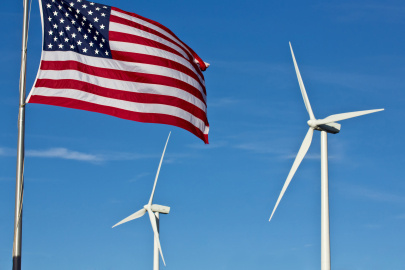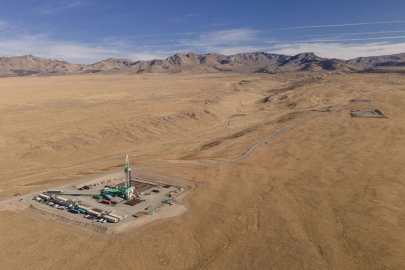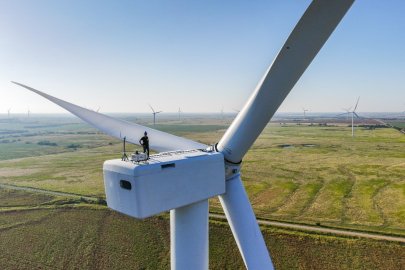-
 EERE is committed to bringing the benefits of energy innovation to every American by making the United States a global leader in renewable energy and energy efficiency technologies.
EERE is committed to bringing the benefits of energy innovation to every American by making the United States a global leader in renewable energy and energy efficiency technologies.
Energy innovations are playing a significant role in lowering Americans’ energy costs. They are reducing the amount of energy used by households and commuters, businesses and industry, while also providing more affordable and accessible renewable energy options.
How Do Energy Innovations Make Energy More Affordable?
Energy innovations can significantly help reduce American’s energy bills. In fact, in many parts of the country, renewable energy innovations like solar and wind energy are the cheapest forms of new electricity generation.
The U.S. Department of Energy's Office of Energy Efficiency and Renewable Energy (EERE) has played a critical role in driving down delivered costs for a broad range of energy innovations. In just the last 10 years, costs have declined significantly for many technologies including distributed solar (down 26%), land-based wind (down 41%), utility-scale solar (down 73%), electric vehicle (EV) batteries (down 79%), and lithium-ion batteries (down 85%).
Making these energy technologies more affordable can directly increase adoption, which in turn, leads to savings on energy bills. For example, solar panels will save the median U.S. homeowner almost $50,000 over 25 years, a benefit more widely available due to the 78% reduction in the cost of rooftop solar energy systems since 2005. Add efficient appliances, lighting, and heating, ventilation, and air-conditioning (HVAC), as well as insulation and air sealing, and the average household can save a further 40%–50% on their energy bills.
Energy efficiency technologies and improvements adopted across the United States have corresponded to an estimated saving of around $800 billion in energy costs since 1980 using today's prices. Many of these improvements were backed by EERE. One EERE program, the Better Buildings Initiative™, is working with communities and businesses across the country to make our nation’s homes, commercial buildings, and industrial plants more energy efficient by accelerating funding and sharing successful best practices. The program has saved participants over $18.5 billion in energy costs and over 16.2 billion gallons of water. Thanks to these types of cost-saving energy innovations and programs, energy consumption per household has declined by almost 20% since 2005.
How To Get an Affordable Energy Mix
Every American deserves the peace of mind that comes with knowing they can afford to power their homes without sacrificing other essentials. The federal government is working to lower energy costs for everyone.
To lower energy costs, you can improve energy efficiency at home and in buildings. Energy-efficient and electric building and appliance upgrades can also reduce indoor and outdoor air pollution, improving health in communities and cutting millions of tons of greenhouse gas emissions every year.
By exploring innovative retrofit solutions such as super-insulated retrofit panels, advanced air and duct sealing, and aerogel-insulated windows, we can improve energy efficiency. Efficient electrification will improve the affordability, comfort, and performance of low- to moderate-income homes, expanding access to air conditioning in communities that don’t have it.
Examples of innovations include plug-and-play heating, cooling, and water-heating solutions, as well as low-global-warming-potential refrigerants and integrated ventilation packages. Smart controls manage home energy use, communicate with utilities, and lower electric bills. Ongoing advances to technologies, like smart electric panels and grid-interactive devices, can help homes maintain power even during widespread outages.
Americans can also get easier access to affordable energy through federal and state tax credits and incentives. Some historic funding for tax rebates and credits making it possible for everyday Americans to make energy and cost-saving changes include:
- Tax credits of up to $7,500 and $4,000 for buyers of new and used electric vehicles, respectively.
- Tax credits and rebates for energy-efficient home upgrades, such as heat pumps, rooftop solar panels, and insulation.
Save Money on Energy
Reduced Energy Costs News
-
 EERE invests in research, development, and technology-validation to help modernize the American energy system and position the United States to lead the world in the technical fields that will soon dominate the global energy market.
EERE invests in research, development, and technology-validation to help modernize the American energy system and position the United States to lead the world in the technical fields that will soon dominate the global energy market. -
 The American WAKE experimeNt (AWAKEN) is compiling the world’s largest and most comprehensive dataset on wind energy atmospheric phenomena, detailing how wind and surrounding air particles interact with wind turbines and wind farms.
The American WAKE experimeNt (AWAKEN) is compiling the world’s largest and most comprehensive dataset on wind energy atmospheric phenomena, detailing how wind and surrounding air particles interact with wind turbines and wind farms.

